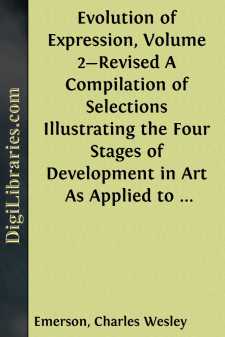Categories
- Antiques & Collectibles 13
- Architecture 36
- Art 48
- Bibles 22
- Biography & Autobiography 816
- Body, Mind & Spirit 145
- Business & Economics 28
- Children's Books 18
- Children's Fiction 14
- Computers 4
- Cooking 94
- Crafts & Hobbies 4
- Drama 346
- Education 58
- Family & Relationships 59
- Fiction 11831
- Foreign Language Study 3
- Games 19
- Gardening 17
- Health & Fitness 34
- History 1378
- House & Home 1
- Humor 147
- Juvenile Fiction 1873
- Juvenile Nonfiction 202
- Language Arts & Disciplines 89
- Law 16
- Literary Collections 686
- Literary Criticism 179
- Mathematics 13
- Medical 41
- Music 40
- Nature 179
- Non-Classifiable 1768
- Performing Arts 7
- Periodicals 1453
- Philosophy 66
- Photography 2
- Poetry 897
- Political Science 203
- Psychology 45
- Reference 154
- Religion 516
- Science 126
- Self-Help 86
- Social Science 82
- Sports & Recreation 34
- Study Aids 3
- Technology & Engineering 59
- Transportation 23
- Travel 463
- True Crime 29
Our website is made possible by displaying online advertisements to our visitors.
Please consider supporting us by disabling your ad blocker.
Evolution of Expression, Volume 2-Revised A Compilation of Selections Illustrating the Four Stages of Development in Art As Applied to Oratory; Twenty-Eighth Edition
Description:
Excerpt
SLIDE.
Thus far in the student's development, his mind has dealt chiefly with each subject as a Whole. Now he begins to find a new interest in showing his hearers that the discourse is made up of a series of definite Parts. He takes delight in fixing their attention upon each part in succession.
As in crossing a brook on stones, a person poises for a moment, first on one stone, then on another, so the speaker balances the minds of his hearers, first on one thought, then another, poising for a moment on each distinct point before leaving it for the next. The teacher should now lead the pupil to attract attention to separate parts as wholes. We are entering the melodramatic stage, where abandon to each part is as necessary as it was in the beginning to the spirit of the whole. The pupil must see the parts and give them to others at any cost.
In the history of art this step is marked by the grotesque; the pupil should be encouraged to stand out the points of thought boldly, regardless of artistic effect. This step is of vital importance in all future development, and unless emphasized now, will require constant effort hereafter.
Sharp contrasts are brought strongly to bear in presenting vividly and distinctly separate points of thought. As the pupil earnestly strives to impress each point of thought, in all its new interest, his voice becomes more decidedly modulated, rising and falling in distinct intervals. Thought of each part as a whole and by contrast, together with the desire to impart it, is reported in varied inflections which add a new charm to expression. Through slides the voice of the speaker may be said to express the tune of the thought.
Analysis. Example: "Tact and Talent." (Page 13.)
Unit, or Whole: A comparison of Tact and Talent.
Parts:
(a) The characteristics of Tact.
Sub-parts:
1. Tact is infinitely resourceful. Paragraph 1, etc.
2. Tact is the power which achieves results. Paragraph 2, etc.
(Other "sub-parts" may be enumerated.)
(b) The characteristics of Talent.
(A number of "sub-parts" are embodied.)
The teacher should view the work of the pupil with special reference to the parts of this selection, leading him to impress these parts, or successive points of thought, upon his audience. The continued antithesis makes this selection a good one for the purpose; parts that are set in contrast easily engage the attention.
CHAPTER II.
As the mind of the pupil separates each thought from the other main thoughts of the discourse, and holds it before the minds of his hearers, he finds it more and more attractive. His endeavor to interest others deepens his own interest, and the slides in his voice report this increased concentration, in increased vitality. The pupil seeing the spirit and life of the whole in each vital part, or part vital to the life of the unit, desires to make each part live as a whole in the minds of the listeners. He no longer touches it with uncertain stroke; the slide has become a Vital Slide.
Analysis. Example: "The Rising of 1776." (Page 35.)
Unit, or Whole: A pastor of early Revolutionary times who makes his Sunday sermon an appeal for freedom.
Parts:
(a) The spirit of the times. Stanza 1.
(b) The church and the people. Stanzas 2 and 3.
(c) The pastor and his appeal. Stanzas 4, 5, 6 and part of 9.
(d) The effect of the appeal. Stanzas 7, 8 and 9.
Let the student's earnest endeavor be to interest his audience in these essential parts. The words which especially reveal these vital parts of the selection will be given with no uncertain stroke. If the interest of both speaker and listener is fully aroused, the slide has become a vital one. Remember always that the desired effect in the voice results from the mental concept; it is not developed mechanically, but grows out of thought.
SLIDE IN VOLUME.
As the mind of the student continues to dwell upon the parts of the subject as separate and distinct wholes, there is gradually developed within him an appreciation of the value of each part. Out of the effort to make each thought live in the minds of the hearers is born the desire to reveal the value of that thought. This desire is reported in the voice through Slide in Volume.
The significance of the term Volume has been explained in an earlier chapter. The valuable parts that the speaker presents are expressed through inflections that suggest breadth and freedom. Each part is felt to have a value of its own, intellectual, moral, esthetic, or spiritual.
Freedom of will is expressed in the voice by slide in volume, for the speaker, convinced of the truth of his thought, is learning obedience to it, and obedience is always the way to freedom....



